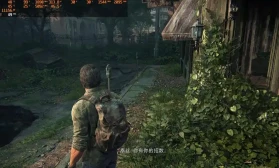In the fast-paced world of video game journalism, a reader’s experience is often defined by what they don’t see. The final article—a sleek, insightful, and engaging piece of deep game news—appears effortless. It reads with clarity, bursts with authority, and tells a compelling story. Yet, this polish is never an accident. It is the direct result of a meticulous, multi-layered editing process that operates as the silent engine of quality content. This is the invisible art that transforms a raw first draft into a publication-ready masterpiece.
The journey begins not with writing, but with a concept. For deep game news, which goes beyond mere announcements into analysis, previews, and investigative features, the editorial strategy is paramount. An editor-in-chief or lead editor identifies a gap in the coverage or a story brewing beneath the surface of a new release. They ask the pivotal questions: Why does this matter now? What unique angle can we provide? Who is our audience? This strategic foundation sets the stage for everything that follows, ensuring the content has a clear purpose before a single word is typed.
Once a writer completes their initial draft, the real sculpting begins with Developmental Editing. This is the big-picture phase. Here, the editor dons the hat of a architect, assessing the structure and core argument of the piece. The focus is on substance, not syntax. Does the article have a strong narrative flow? Is the thesis supported by compelling evidence and logical reasoning? Are there gaps in the analysis? For a deep-dive into, say, the technical marvels of a new game engine, a developmental editor might ask the writer to elaborate on a specific graphical technique or to include contrasting opinions from other developers to add depth.
This stage is a collaborative dialogue. Editors provide macro-level feedback, often through inline comments and a comprehensive summary letter. They might suggest rearranging entire sections, cutting tangential paragraphs, or bolstering certain arguments with additional research. The goal is to strengthen the article's backbone, ensuring it is not just a collection of facts, but a coherent and persuasive narrative.
With the structure solidified, the process moves to Line Editing. Now, the editor becomes a wordsmith, focusing on the language itself. This is where the article truly finds its voice. The editor reads sentences aloud, listening for rhythm, pace, and clarity. They hunt for awkward phrasing, redundant words, and inconsistent tone. In game news, where complex ideas about gameplay systems or narrative design must be conveyed accessibly, line editing is crucial. An editor might rework a jargon-heavy explanation into a more elegant metaphor that any reader can grasp. They ensure the prose is not only correct but also a pleasure to read, matching the publication's distinctive style—whether it’s authoritative, witty, or passionately fan-driven.

The next layer is the Copy Editing phase, the domain of precision and consistency. This is a microscopic examination of the text. The copy editor is a guardian of grammar, spelling, punctuation, and factual accuracy. They verify every proper noun: character names, developer studios, engine terminology (‘Unreal Engine 5’, not ‘unreal engine 5’). They cross-reference release dates, patch version numbers, and quotes from interviews. A single misstated fact can undermine the entire credibility of a deep news piece. Furthermore, they enforce a style guide (like AP or Chicago Manual of Style), ensuring consistency in everything from the use of Oxford commas to the formatting of game titles (Elden Ring).
Finally, the article undergoes Proofreading. This is the last line of defense, a final sweep for any errors that slipped through previous rounds. The proofreader looks for typographical errors, formatting glitches, broken links, and incorrect metadata. It is a final, hyper-focused check to ensure the product is pristine. At this stage, the content is largely locked; the changes are minor but vital for professionalism.
Woven throughout this entire process is SEO Optimization, a modern necessity. A skilled editor doesn’t just tack keywords onto a finished article. Instead, they integrate SEO considerations organically from the developmental stage. They identify relevant high-value terms (“open-world RPG,” “game mechanics,” “sci-fi shooter”) and ensure the article is structured to be discovered by search engines without sacrificing readability for human audiences. This involves crafting compelling meta descriptions, optimizing headers, and ensuring that keywords are placed naturally within the flow of the analysis.
Beyond these structured stages, the editing process for deep game news requires a specific form of expertise: player empathy. A good editor in this field must understand not just language, but games themselves. They can sense when a writer’s description of a combat system feels off or when a preview might be overhyping a feature based on a limited demo. This gaming literacy allows them to edit for authenticity, ensuring the content resonates with a knowledgeable and often passionate community of readers.
The relationship between writer and editor is the heartbeat of this process. It is not adversarial but symbiotic. The writer provides the raw expertise, passion, and initial insight. The editor provides the objective perspective, the strategic focus, and the disciplined craft required to refine that passion into its most powerful form. It is a partnership built on a shared goal: to deliver value and clarity to the reader.
In an era of instant updates and social media chatter, polished deep game news stands apart because it offers curated understanding. It provides context, analysis, and storytelling that raw information cannot. This value is imbued almost entirely in the editing process. It is the relentless pursuit of clarity, accuracy, and engagement that transforms a good article into an essential read. The next time you finish a deeply satisfying piece of games journalism, remember that its polish is a testament to the invisible art of editing—the quiet, rigorous craft that makes all the difference.













